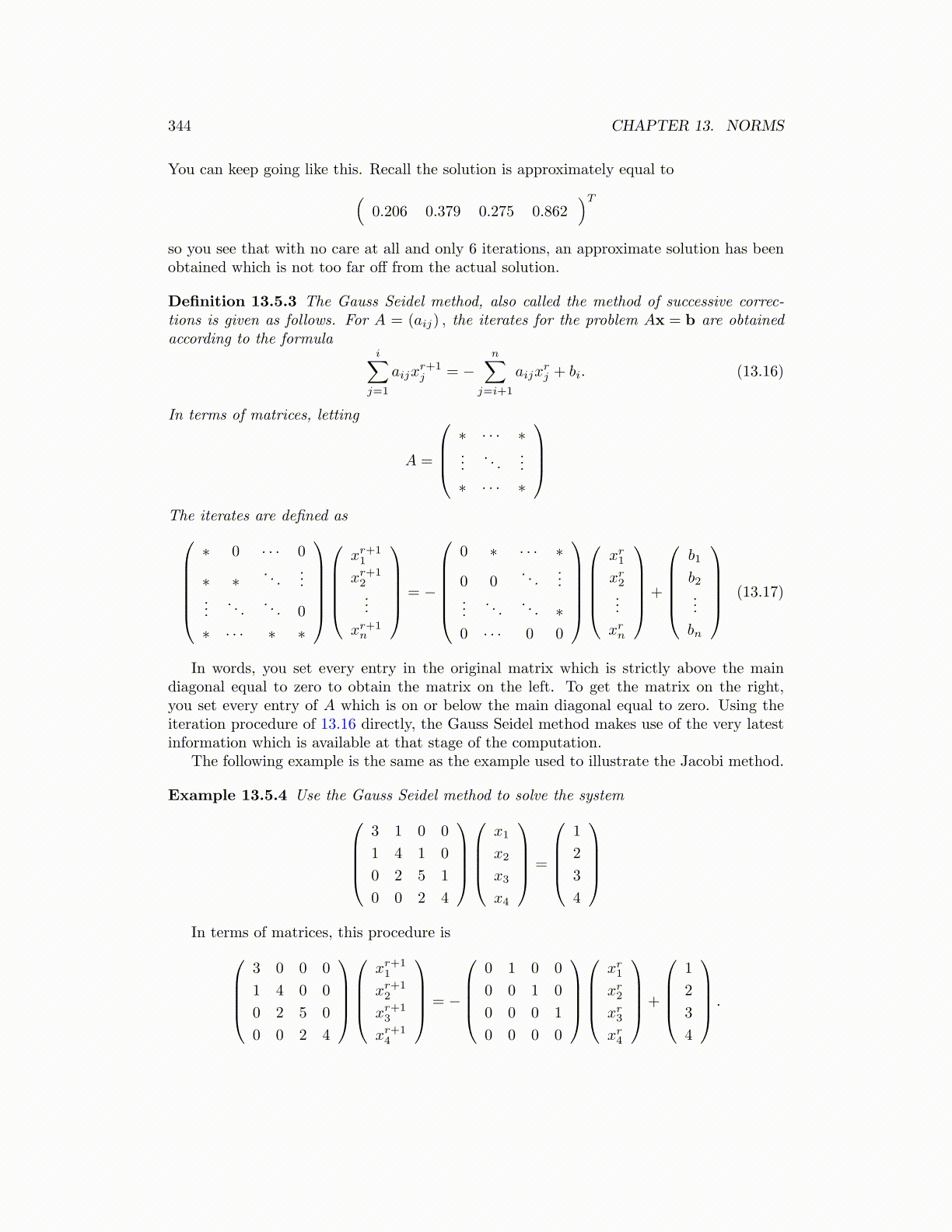
344 CHAPTER 13. NORMS
You can keep going like this. Recall the solution is approximately equal to(0.206 0.379 0.275 0.862
)Tso you see that with no care at all and only 6 iterations, an approximate solution has beenobtained which is not too far off from the actual solution.
Definition 13.5.3 The Gauss Seidel method, also called the method of successive correc-tions is given as follows. For A = (aij) , the iterates for the problem Ax = b are obtainedaccording to the formula
i∑j=1
aijxr+1j = −
n∑j=i+1
aijxrj + bi. (13.16)
In terms of matrices, letting
A =
∗ · · · ∗...
. . ....
∗ · · · ∗
The iterates are defined as
∗ 0 · · · 0
∗ ∗. . .
......
. . .. . . 0
∗ · · · ∗ ∗
xr+11
xr+12...
xr+1n
= −
0 ∗ · · · ∗
0 0. . .
......
. . .. . . ∗
0 · · · 0 0
xr1xr2...
xrn
+
b1
b2...
bn
(13.17)
In words, you set every entry in the original matrix which is strictly above the maindiagonal equal to zero to obtain the matrix on the left. To get the matrix on the right,you set every entry of A which is on or below the main diagonal equal to zero. Using theiteration procedure of 13.16 directly, the Gauss Seidel method makes use of the very latestinformation which is available at that stage of the computation.
The following example is the same as the example used to illustrate the Jacobi method.
Example 13.5.4 Use the Gauss Seidel method to solve the system3 1 0 0
1 4 1 0
0 2 5 1
0 0 2 4
x1
x2
x3
x4
=
1
2
3
4
In terms of matrices, this procedure is
3 0 0 0
1 4 0 0
0 2 5 0
0 0 2 4
xr+11
xr+12
xr+13
xr+14
= −
0 1 0 0
0 0 1 0
0 0 0 1
0 0 0 0
xr1xr2xr3xr4
+
1
2
3
4
.